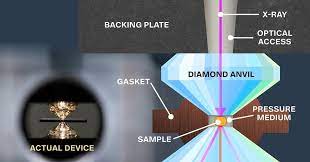
Breaking News
 Israel's Push To Immigrate Muslims To The West Is Behind The Resurgence Of Islamic Terrorism
Israel's Push To Immigrate Muslims To The West Is Behind The Resurgence Of Islamic Terrorism
 EU Sanctions Swiss Intelligence Expert Jacques Baud
EU Sanctions Swiss Intelligence Expert Jacques Baud
 The Map Is Not the Territory: Ukraine, Manufactured Consent, and Europe's War of Attrition
The Map Is Not the Territory: Ukraine, Manufactured Consent, and Europe's War of Attrition
 The Rise of the Isaac Accords: How Israel is Redrawing South America's Political Landscape
The Rise of the Isaac Accords: How Israel is Redrawing South America's Political Landscape
Top Tech News
 This tiny dev board is packed with features for ambitious makers
This tiny dev board is packed with features for ambitious makers
 Scientists Discover Gel to Regrow Tooth Enamel
Scientists Discover Gel to Regrow Tooth Enamel
 Vitamin C and Dandelion Root Killing Cancer Cells -- as Former CDC Director Calls for COVID-19...
Vitamin C and Dandelion Root Killing Cancer Cells -- as Former CDC Director Calls for COVID-19...
 Galactic Brain: US firm plans space-based data centers, power grid to challenge China
Galactic Brain: US firm plans space-based data centers, power grid to challenge China
 A microbial cleanup for glyphosate just earned a patent. Here's why that matters
A microbial cleanup for glyphosate just earned a patent. Here's why that matters
 Japan Breaks Internet Speed Record with 5 Million Times Faster Data Transfer
Japan Breaks Internet Speed Record with 5 Million Times Faster Data Transfer
 Advanced Propulsion Resources Part 1 of 2
Advanced Propulsion Resources Part 1 of 2
 PulsarFusion a forward-thinking UK aerospace company, is pushing the boundaries of space travel...
PulsarFusion a forward-thinking UK aerospace company, is pushing the boundaries of space travel...
 Dinky little laser box throws big-screen entertainment from inches away
Dinky little laser box throws big-screen entertainment from inches away
 'World's first' sodium-ion flashlight shines bright even at -40 ºF
'World's first' sodium-ion flashlight shines bright even at -40 ºF
Room-temperature superconductors could zap us into the future

In the future, wires might cross underneath oceans to effortlessly deliver electricity from one continent to another. Those cables would carry currents from giant wind turbines or power the magnets of levitating high-speed trains.
All these technologies rely on a long-sought wonder of the physics world: superconductivity, a heightened physical property that lets metal carry an electric current without losing any juice.
But superconductivity has only functioned at freezing temperatures that are far too cold for most devices. To make it more useful, scientists have to recreate the same conditions at regular temperatures. And even though physicists have known about superconductivity since 1911, a room-temperature superconductor still evades them, like a mirage in the desert.



